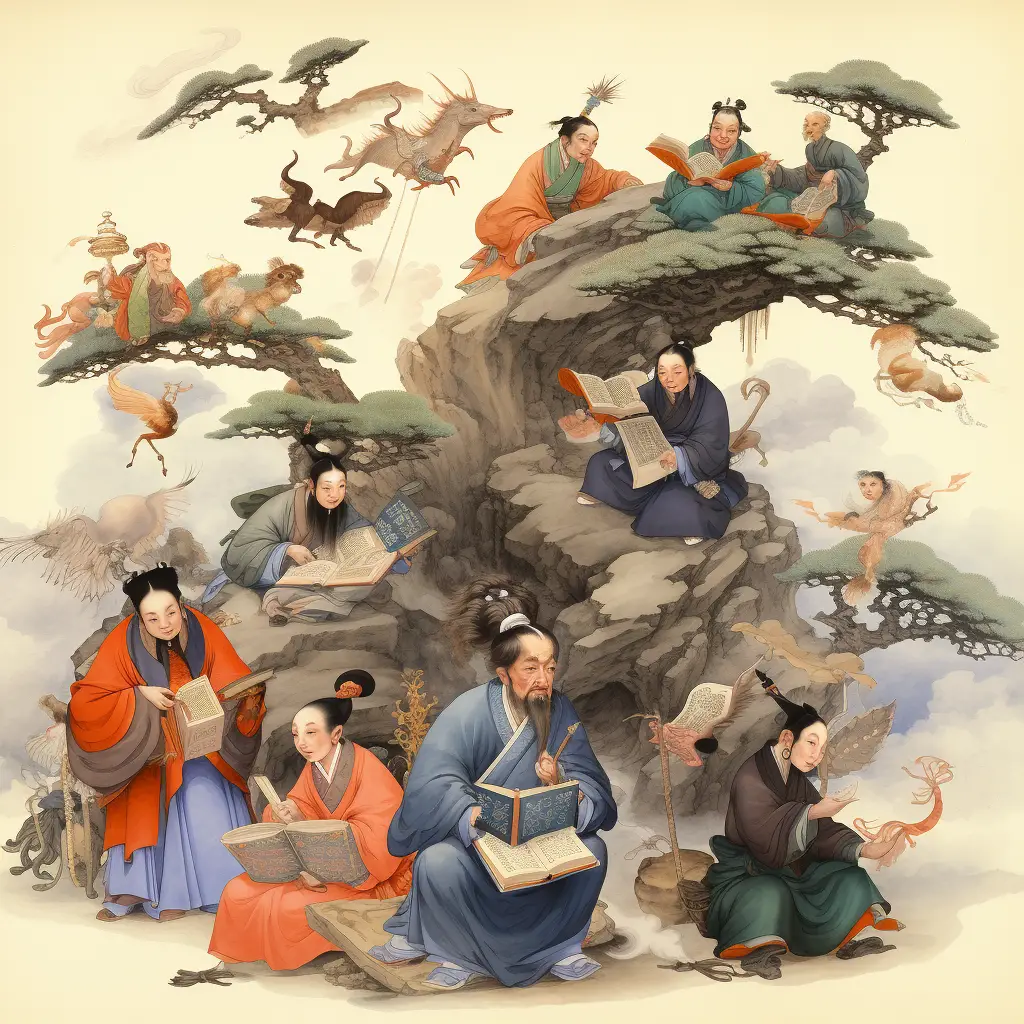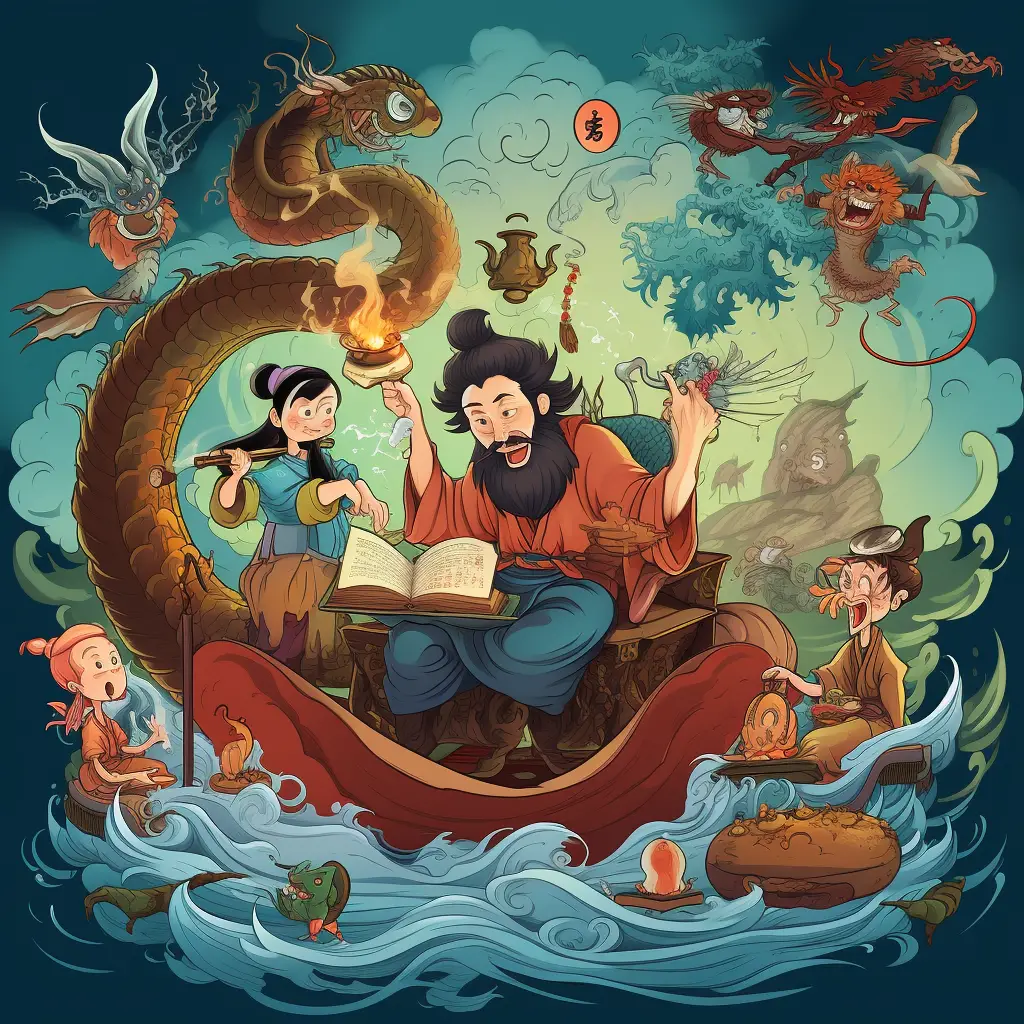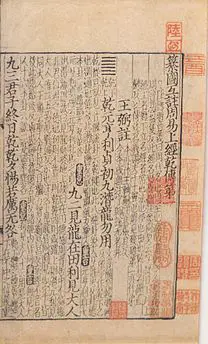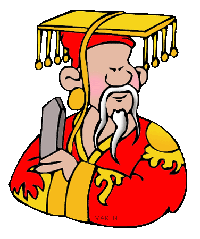Chinese Literature
Ancient Chinese literature is a rich and diverse collection of works that span over thousands of years. From the earliest known texts, such as the Book of Songs and the Analects of Confucius, to the epic novels of the Ming and Qing dynasties, Chinese literature has had a profound impact on the world. It has influenced not only other literary traditions, but also philosophy, art, and culture in general.

Ancient Chinese Literature Facts for Kids
- Ancient Chinese literature began over 3,000 years ago.
- “The Book of Songs” is the oldest Chinese poetry collection.
- “Classic of History” recorded early Chinese history.
- “I Ching” is an ancient divination text.
- Confucius is one of China’s most famous writers.
- “Journey to the West” is a classic adventure tale.
- Chinese literature often features moral lessons.
- Many stories are about mythological beings.
- Calligraphy, beautiful writing, is an art form.
- “Dream of the Red Chamber” is a famous novel.
Confucianism
Ancient Chinese literature was influenced by Confucianism, an ethical system from Confucius, a revered philosopher. Confucian values like respect and righteousness were frequent themes in the “Four Books and Five Classics,” the core texts of Confucianism. These texts have shaped Chinese society and its literature, leaving a lasting cultural impact.
Chinese Philosophy
Ancient Chinese literature shows the influence of Chinese philosophy. Confucianism, Daoism, and Legalism shaped these works. Confucian ideas about social harmony are in the “Analects.” Daoist thoughts about natural balance influenced poetry, like in “Dao De Jing.” Legalist beliefs about strict rules affected historical records. This way, ancient literature provides a view into the development of Chinese philosophy.
Tang Poetry
Tang poetry is a significant part of ancient Chinese literature, blossoming during the Tang Dynasty. Famous poets like Li Bai and Du Fu wrote about life, nature, and society. Their work showcased the writing skills of that era and reflected the thoughts and feelings of the people. The variety of themes in Tang poetry adds depth to ancient Chinese literature.
Chinese Calligraphy
Chinese calligraphy, the art of writing, is closely tied to ancient Chinese literature. More than just text, it’s a form of art. Each stroke carries meaning beyond the word itself. Famous literary figures, like Wang Xizhi, were also skilled calligraphers. Through calligraphy, literature became a visual and interpretive art, adding to China’s cultural heritage.
Chinese Mythology
Chinese mythology is vital to ancient Chinese literature, offering a variety of stories and characters. Many texts reference myths, like Pangu, the creator god, and the Monkey King’s journey. These tales gave moral lessons, explained nature, and entertained readers. With its symbolism and meanings, Chinese mythology shaped the themes of ancient literature.
Chinese Folklore

Chinese folklore significantly influenced ancient Chinese literature. Tales of heroes, mythical creatures, and morals were recorded in literary works. Stories like those of Judge Bao added morality, humor, and wisdom to literature. These narratives, showing ancient society’s values, enriched the variety and depth of Chinese literature.
The Four Great Classical Novels
The Four Great Classical Novels – “Water Margin,” “Romance of the Three Kingdoms,” “Journey to the West,” and “Dream of the Red Chamber” – are pillars of ancient Chinese literature. They offer profound insights into Chinese society, history, and culture during different periods.
Each novel, with its intricate plot and character development, reflects a distinctive facet of ancient Chinese life. For instance, “Romance of the Three Kingdoms” explores war and strategy, while “Dream of the Red Chamber” delves into family dynamics and societal norms. These novels, masterpieces in their own right, represent the zenith of ancient Chinese literary creativity and artistry.
Daoism (Taoism)
Daoism focuses on natural harmony and literature. Many works feature Daoist themes of balance and simplicity. The Daoist text “Dao De Jing,” by Laozi, offers insights into Daoism. Tales of immortals and hermits from Daoist lore enrich Chinese literature. Through these influences, Daoism shaped the philosophy and aesthetics of ancient literature.
Imperial Examination System
The Imperial Examination System in ancient China impacted literature. It tested knowledge of literature and Confucian texts, making literature key in education. New literary genres, like the “eight-legged essay,” were developed for these exams. Examinees often wrote about their feelings and beliefs, affecting literary themes. This link between the system and literature greatly influenced ancient Chinese literature.
Chinese Art and Culture
Literature is deeply linked to Chinese art and culture. Art often features literary themes or texts. Literature also depicts cultural elements like rituals and festivals. Through this exchange, literature and art enriched each other, creating a broad picture of Chinese civilization.
Chinese Script Evolution
The evolution of Chinese script, intricately linked with Ancient literature, mirrors the civilization’s emphasis on communication and self-expression. Beginning with the Shang Dynasty’s Jiaguwen script, derived from pictographs inscribed onto oracle bones for divination, the language transformed through several phases, such as Dazhuan, Xiaozhuan, and Lishu, before refining into more familiar scripts like Kaishu, Xingshu, and Caoshu.
These evolving writing systems both reflected societal changes and facilitated cultural expression. The inception of paper during the Han Dynasty and the subsequent development of woodblock printing during the Tang Dynasty significantly boosted the preservation and dissemination of Chinese literature, contributing to its enduring legacy.
Woodblock Printing
Woodblock printing, introduced in the Tang Dynasty, democratized Ancient Chinese literature by making texts widely accessible. This increased accessibility led to script evolution as the need for readability drove refinement and standardization. Thus, woodblock printing was a significant factor in shaping Chinese literature and script.
Tang Dynasty Literature
In the Tang Dynasty (618-907 AD), literature thrived, driven by the Imperial Examination system’s focus on literary works. This period witnessed extensive literary production, from the realism of Du Fu to the romanticism of Li Bai.
These developments influenced Chinese script evolution, emphasizing readability and expression. Furthermore, the era’s high literary output stimulated advancements in woodblock printing, democratizing literature access. Therefore, the Tang Dynasty significantly shaped Ancient Chinese literature and script evolution.
Ancient Chinese Education
Literature had a profound influence on education in Ancient China. A significant aspect of the curriculum, was primarily presented through the “Four Books and Five Classics,” attributed to Confucius and other philosophers.
These texts served as key educational tools for teaching morality and ethics and were central to the imperial examinations, the system designed to select administrative officials. Thus, literature was an essential tool for moral and intellectual cultivation in society, showing its intrinsic connection with ancient Chinese education.
Impact of Literature on Society
Literature significantly influenced societal norms and development. Works like Confucius’s “Analects” and Daoist texts such as “Dao De Jing” shaped social behavior and perceptions by imparting insights into life and morality. These texts also chronicled historical events, informing future generations and impacting societal narratives. Therefore, literature’s role was central in molding personal conduct and political structures.
Influence on Other Cultures
Literature has significantly influenced the literary landscape of numerous cultures, particularly those in Asia. The philosophical texts of revered thinkers like Confucius, Laozi, and Zhuangzi, as well as the poetry of the Tang dynasty, have permeated beyond China’s borders.
Korean, Japanese, and Vietnamese literature have been particularly influenced, adopting Chinese writing styles and philosophies. Chinese Buddhist scriptures also played a crucial role in spreading Buddhism and its literature across different countries. The broad impact of ancient Chinese literature highlights its global significance in the world literature context.”
Iconic Works and Authors
Chinese literature features a range of influential works and authors that have greatly impacted cultural thought. Key texts include Laozi’s ‘Tao Te Ching’ and Confucius’ ‘Analects’, which have shaped philosophical ideologies. The Tang dynasty era is known for its iconic poetry, while narrative pieces like Wu Cheng’en’s ‘Journey to the West’ highlight the richness of ancient Chinese storytelling. These works reflect depth and diversity.
God of Literature
Literature is marked by its reverence for the God of Literature, Wenchang Wang. Being the deity of culture, literature, and examinations, his influence is profound in literary works. Stories and verses often invoke his wisdom and guidance, emphasizing the pursuit of knowledge. His symbolic presence guided scholars, writers, and intellectuals toward enlightenment. This integration of divinity within the literary sphere underscores the spiritually-infused richness.
Themes in Literature
Enduring themes reflecting human morality, life’s cyclicity, and the transient beauty of existence are deeply ingrained in the literary works of yore. These texts prominently manifest ideals of harmony and loyalty, emphasizing natural alignment and simplicity, alongside contemplation of suffering and the quest for enlightenment. These themes not only provide insights into the mindset and societal structures of ancient societies but also contribute to a universal understanding of life.
Literary Formats and Genres
The diversity in literary formats and genres is notable. This encompasses poetry and prose, philosophical texts, historical records, and drama. Poetry styles such as the Shi, Ci, and Qu place emphasis on rhythm, meter, and parallelism. Prose narratives, essays, travelogues, and letters encapsulate intellect and elegance. Philosophical texts often take the form of dialogues or aphorisms, reflecting deep insights. The historical genre provides detailed records of the era through chronicles, biographies, and accounts of events. Drama developed later, fuses prose, poetry, and music, offering a vibrant tapestry of cultural and societal norms.
China’s Timeless Literary Tradition Revealing Culture
One can learn about a nation’s culture through its literature. For over 3000 years, China has written in the same language, showcasing a deep tradition in literature, drama, and visual arts. Early works from figures like Confucius and Lao-tzu provide guidance on ethical behavior and societal organization. Historical writing has flourished from these roots.
Drama is another old and important literary form. Chinese drama usually combines vernacular language with music and song due to which it is popular with the common people.
The Shih Ching and the Spread of Knowledge
The history of ancient Chinese begins with the Shih Ching or Book of Songs, compilation of 305 lyrics of various types. It consists of 160 folk songs and 74 festal songs. Most of the songs probably were composed and sung between 1000 and 700 BC, mostly at Chou court ceremonies. It was due to invention of woodblock and movable type printing that written knowledge could rapidly spread throughout China.

The most important classic in Chinese literature is the Book of Changes, a manual of foretelling based on eight trigrams attributed to the emperor Fu Xi. It was during the Warring States period, the text was re-interpreted as a system of cosmology and philosophy that subsequently became essential to Chinese culture.
The Classic of History got its name in the Han dynasty. It is a book of previous generations. This book is a compilation of documents and records related to events of Ancient China. This book contains the best examples of early Chinese prose.
The Classic of History is arranged in chronological order. It consists of 100 articles in four parts:
a. The Document of Yu Shun
b. The Document of Xia Dynasty
c. The Document of Shang Dynasty
d. The Document of Zhou Dynasty.
The book consists of four forms of writing.
They are as follows:
Codes – the documentation of law codes and statutes
Conversations – between emperors and ministers
Pledges – the pledges made by emperors and officials
Mandates – the imperial mandates emperors made when appointing officials
Record of Rites is a restoration of the original Classic of Rites. It describes ancient rites and court ceremonies from the Warring States Period to the Qin and Han dynasties.
The Spring and Autumn Annals: Ancient China’s Earliest History
The Spring and Autumn Annals is the earliest surviving Chinese historical text, covering the period from 722 BC to 481 BC in the State of Lu. It is believed to have been compiled by Confucius, who spent 14 years traveling to various states before returning to Lu in his old age. By reading the state’s documents, Confucius expressed his political ideas through the compilation of The Spring and Autumn Annals, documenting the 242-year history of Lu under the rule of 12 monarchs.
The Huainanzi
It was also one of the earliest Chinese texts to cover topics of Chinese geography and topography. This book was written under the support of Liu An, Prince of Huainan.
The book refers to the study of methods and assumptions made in studying Chinese history. The Huainanzi is the articulation of Western Han philosophy and statecraft. The text is on “all that a modern monarch needs to know,” it further emphasizes rigorous self-cultivation and mental discipline.
Romance of the Three Kingdoms
This is one of the most famous novels of early China which was written about 1330 AD, during the Yuan Dynasty, by a man named Luo Guanzhong.
This novel tells the story of the momentous rule of the Han dynasty when the Chinese empire was divided into three warring kingdoms. This decisive period in Chinese history became a subject of great interest to historians, poets, and dramatists.
The Dream of the Red Chamber
Dream of the Red Chamber composed by Cao Xueqin, is one of China’s Four Great Classical Novels. It was written in the middle of the 18th century during the Qing Dynasty.
It is considered a masterpiece of Chinese literature and is considered to be the peak point of Chinese fiction.
Dream of the Red Chamber is semi-autobiographical, describing the rise and decay of author Cao Xueqin’s own family due to the extension, of the Qing Dynasty.
Other literary works like Records of the Grand Historian by Sima Qian, Analects by Confucius, Tao Te Ching by Laozi, Water Margin by Shi Naian, Journey to the West by Wu Chengen, Lessons for Women by Ban Zhao and Eighteen Verses Sung to a Barbarian Whistle by poetess Cai Wenji have made notable contributions to Chinese literature.


